We toured the east coast of India after spending a month in Sri Lanka driving our own tuk-tuk, and the first stop was Mamallapuram, also known as Mahabalipuram, a coastal town on the Bay of Bengal, in the state of Tamil Nadu.
The popularity of this destination, which is evident from the number of accommodations and shops for tourists, is due to a group of more than forty sculptures and temples carved into the rock, all of them World Heritage Sites.
Five Rathas and the Shore Temple are perhaps the most impressive, but Arjuna’s Penance and Krishna’s huge Butterball are also worth seeing. An entire stone city that was one of the main cities of the Pallava dynasty.
The Pavalla dynasty ruled the northern regions of Tamil Nadu and Andhra Pradesh in the 6th and 7th centuries AD. They are known for sponsoring great architectural works, sculptures and temples, such as those seen at Mamallapuram (Mahabalipuram) today.
It is said that the Pavalla script was the seed of other current languages such as Khmer or Burmese. As an interesting fact, we will tell you that, after the tsunami of 2004, when the waters and sand returned to their place, new structures were discovered that we can see today.
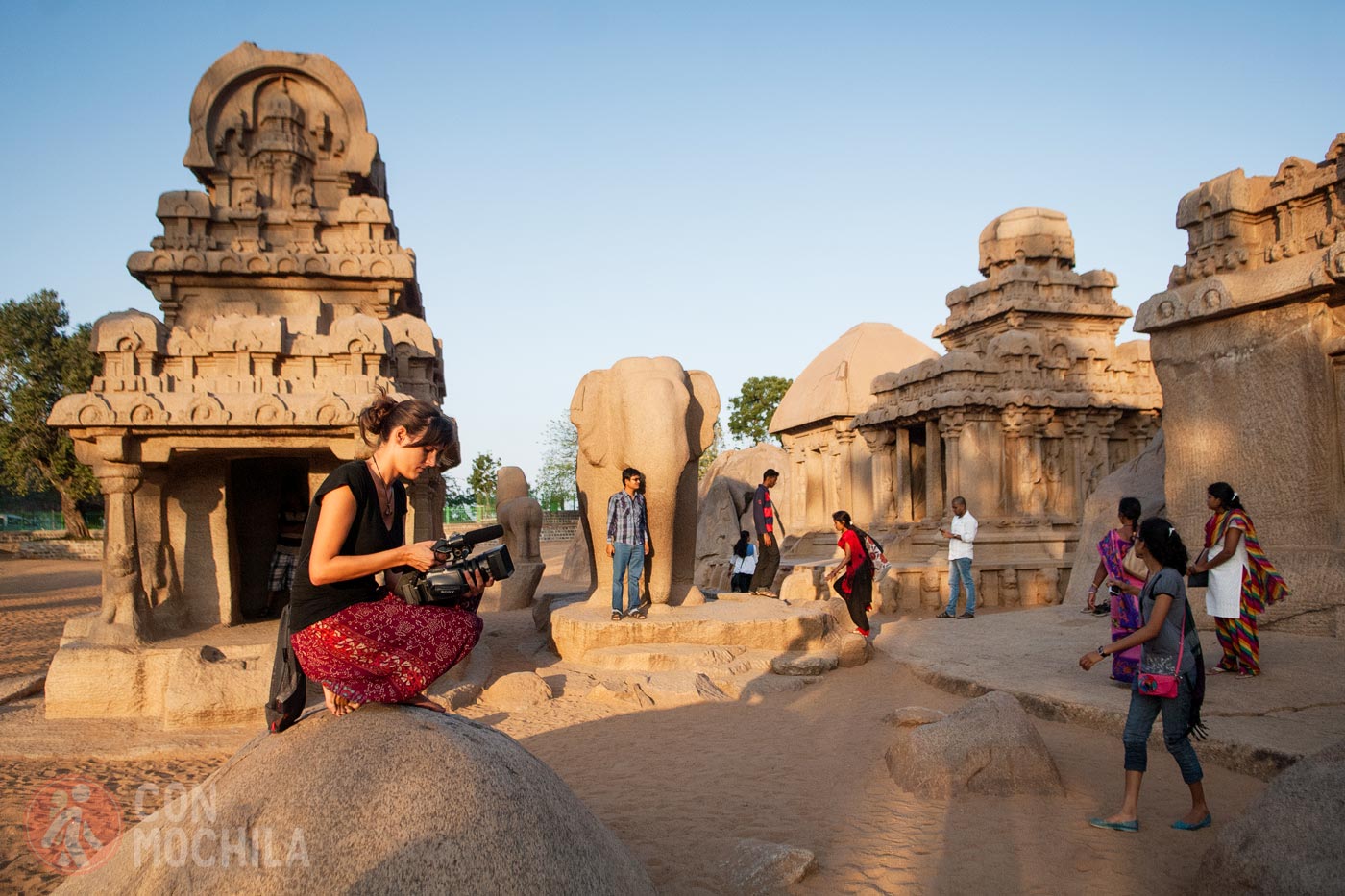
As you can see, Mamallapuram is much more than a small coastal town. If we come from Chennai or Bangalore, we can enjoy its historical heritage and its beaches.
Mamallapuram is located on the east coast of India, in the state of Tamil Nadu. This coastal town experiences all four seasons including a monsoon season. We tell you in detail so you can decide which is the best time to go:
We know that the subject of visas can be somewhat confusing, especially for India, where obtaining one is an essential requirement for entry. In the article on how to obtain an Indian visa step by step (coming soon) you have information on how to apply for one online for up to 5 years.
It’s essential to travel to India with comprehensive insurance. We were among the first to offer the popular IATI discount, and you can now get it with Heymondo Travel Insurance as well.
You can find more information about both companies through the links provided above, or you can access the discount directly using the buttons below (in both cases, you’ll see the reduced final price on their website):
While many hotels, guesthouses, and restaurants in India offer free Wi-Fi, some travelers prefer or need a constant connection. We’ve included details on obtaining a eSIM India card with unlimited data (from Holafly) or with fixed data but cheaper (from Saily).
If you want to get it directly, here’s the link (with a discount) for both companies:
Mamallapuram does not have a train station, so the nearest one is Chengalpattu Junction, which is about 25 km away. One option is a combined train to Chennai and then a bus to Mamallapuram. You can take a look at our article on trains in India with all the information you need about sleeper classes (3rd class), and we leave here some links to the most popular trains to get to Chennai:
Mamallapuram is about a two-hour bus ride from Chennai. We made the trip from Chennai airport for less than $1.
But you can also go from the city bus station (CMBT) with the local bus 568C, which makes the direct journey 3 times a day:
The journey from Chennai, about 50km away, can also be made by taxi or Uber.
To reach Mamallapuram by plane the nearest airport is Chennai International Airport.
The Shore Temple is located, as its name suggests, on the seashore. Built between 700 and 728 AD, when we arrived some of its sections were being restored, and it has been declared a World Heritage Site by UNESCO.
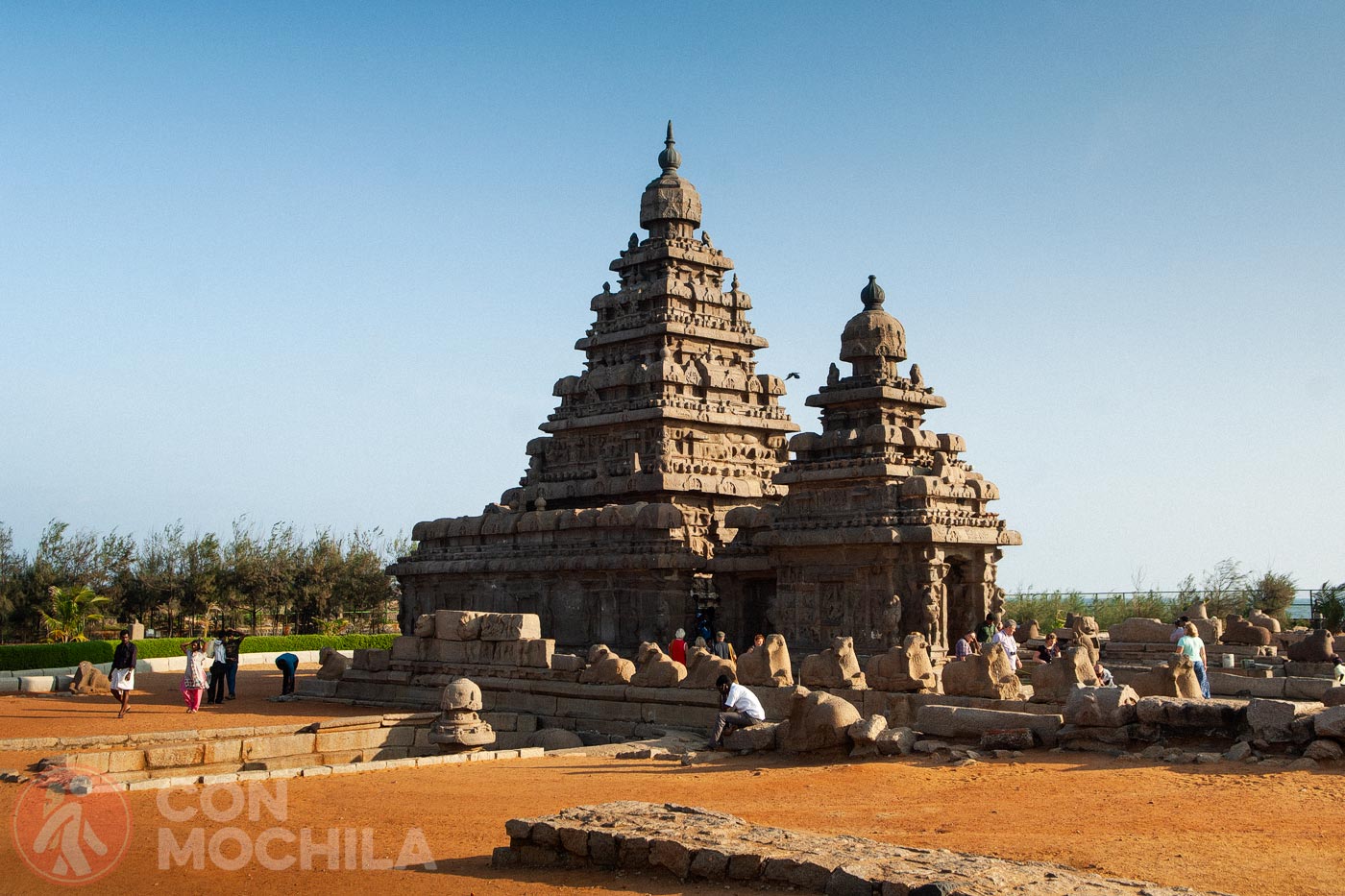
Pyramid-shaped and dedicated to the gods Shiva and Vishnu, this temple produced different feelings in us; while it seemed unremarkable to me, Toni found it photogenic, and he entertained himself with every detail, taking photos non-stop.
The Five Rathas or Pancha Rathas are a set of sculpted rocks from the 7th century during the reign of Narasimhavarman I that, without being more spectacular than the previous temple, knew how to keep me entertained while filming with the camera.
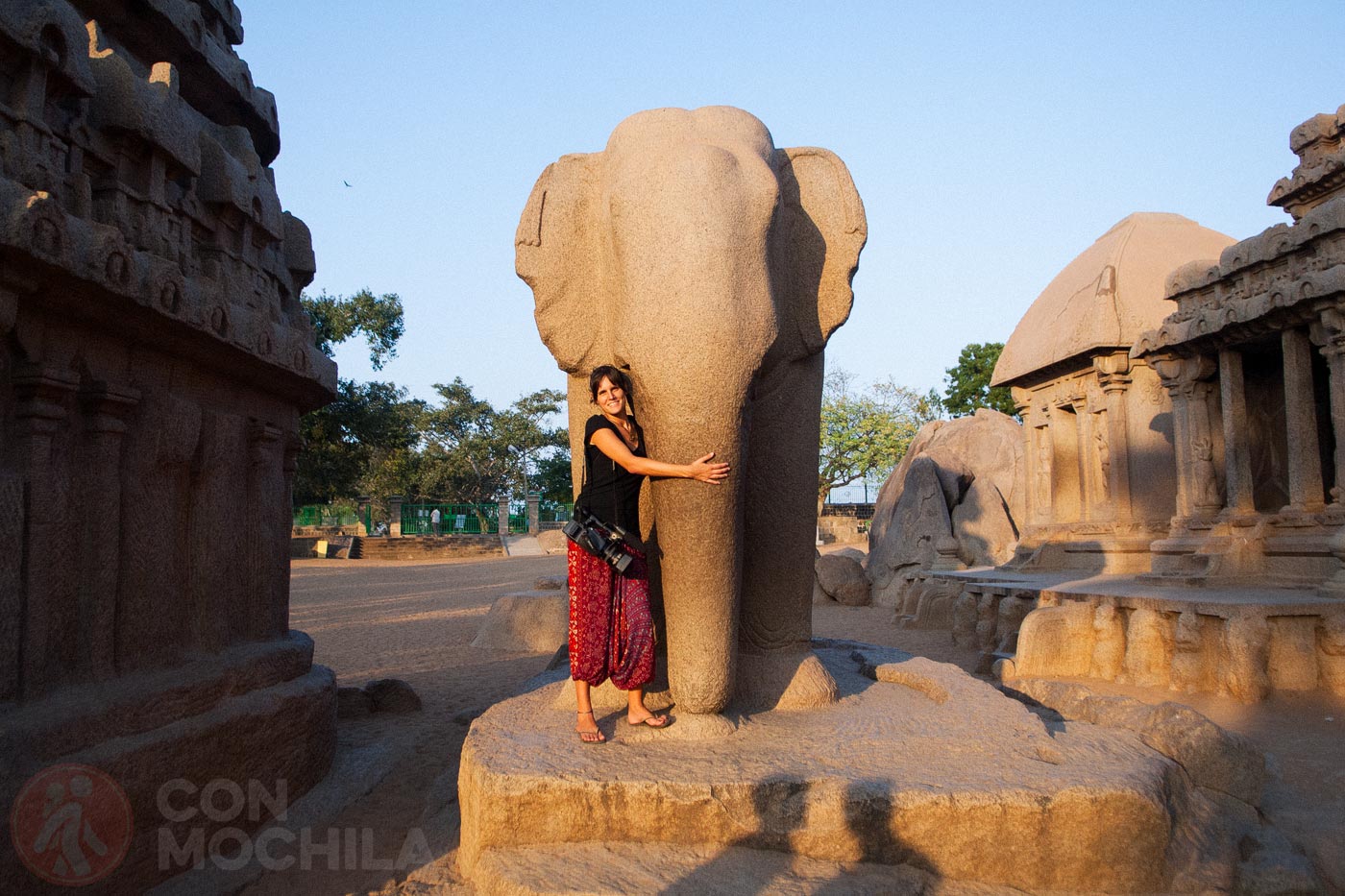
Draupadi Ratha, Arjuna Ratha, Bhima Ratha, Dharmaraja Ratha and Nakula-sahadeva Ratha seem to have been inspired by chariots, and were never considered temples, since they were never consecrated, so it is not known exactly why they were built.
Arjuna’s Penance, also called The Descent of the Ganges because it is based on these two stories, is a huge bas-relief about 30 meters long that one finds on the way to the Five Rathas, and depicts fables and semi-divine animals.
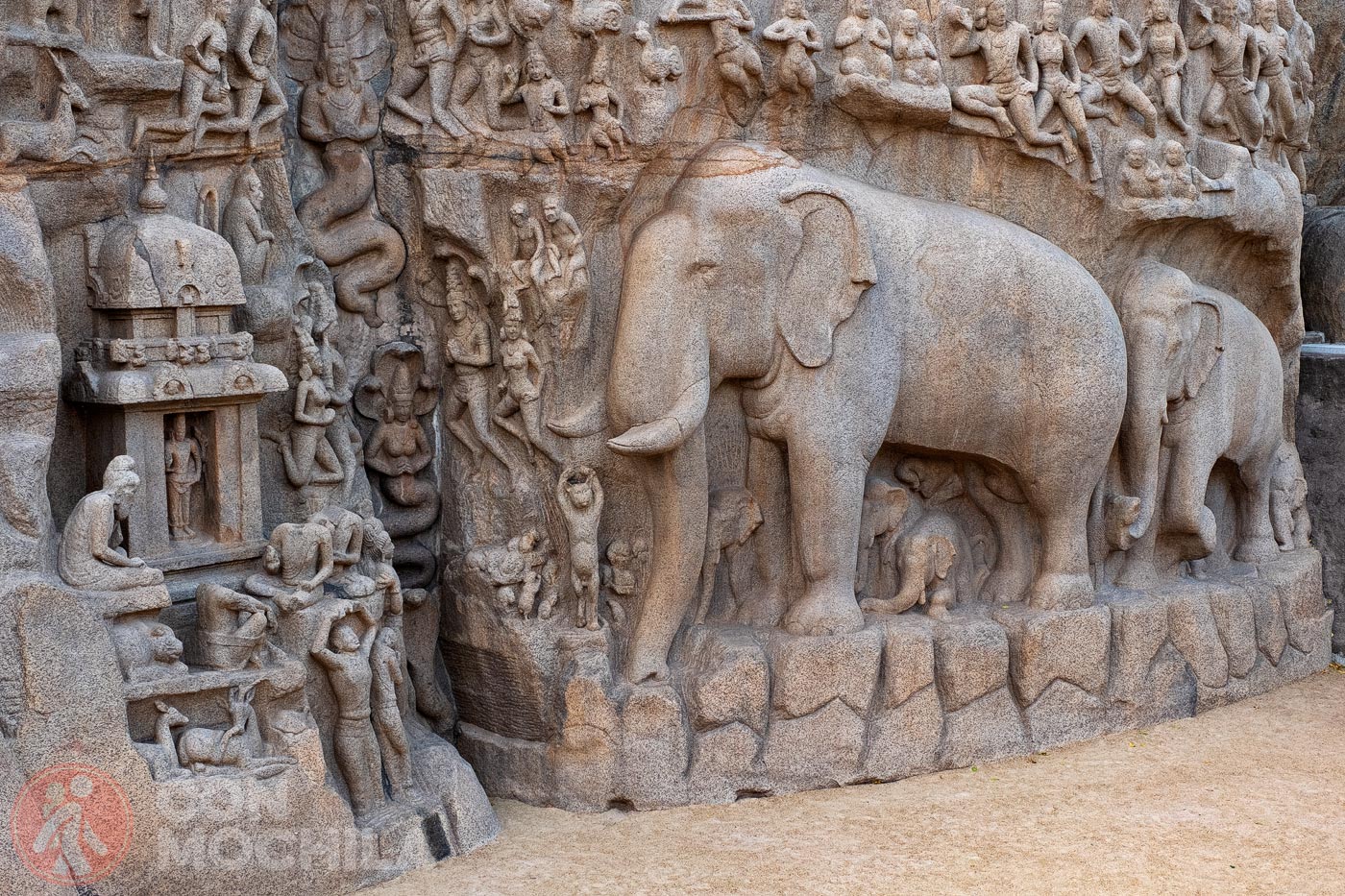
It is divided by a natural fissure in the rock that forms part of the image, with snakes, nagas, Arjuna doing penance so that Shiva gives him the most powerful weapon, and, of course, beautiful elephants cannot be missing.
Finally, in a park where there are several Mandapas and the Ganesh Ratha, we will also find the “ Krishna’s Butterball ” or Vaan Irai Kal, a huge mysterious rock, approximately 5 meters in diameter and weighing 250 tons, dizzyingly placed on a ramp. Throughout history, numerous rulers have tried to move it without success.
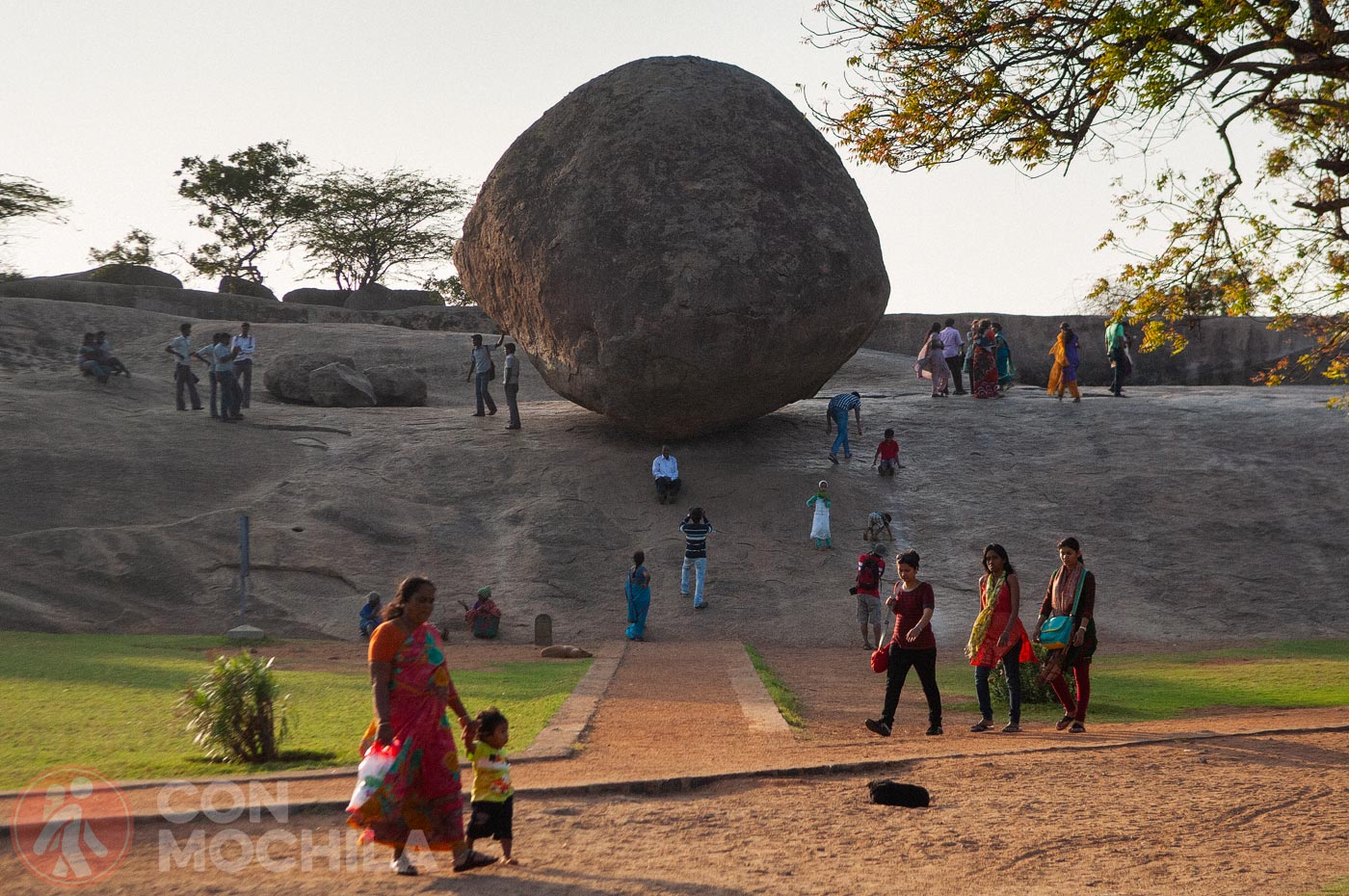
The enormous stone, which seems to have stopped while descending as a result of some spell, is very useful when taking photographs.
Thirukadalmallai Temple or Sthalasayana Perumal Temple is a spectacular one, very close to Arjuna’s Penance, in Dravidian style, and was built during the Pavalla period. It is dedicated to Vishnu and his consort Lakhsmi. The upper part has a seven-tiered stepped tower built in granite during the 15th and 16th centuries.
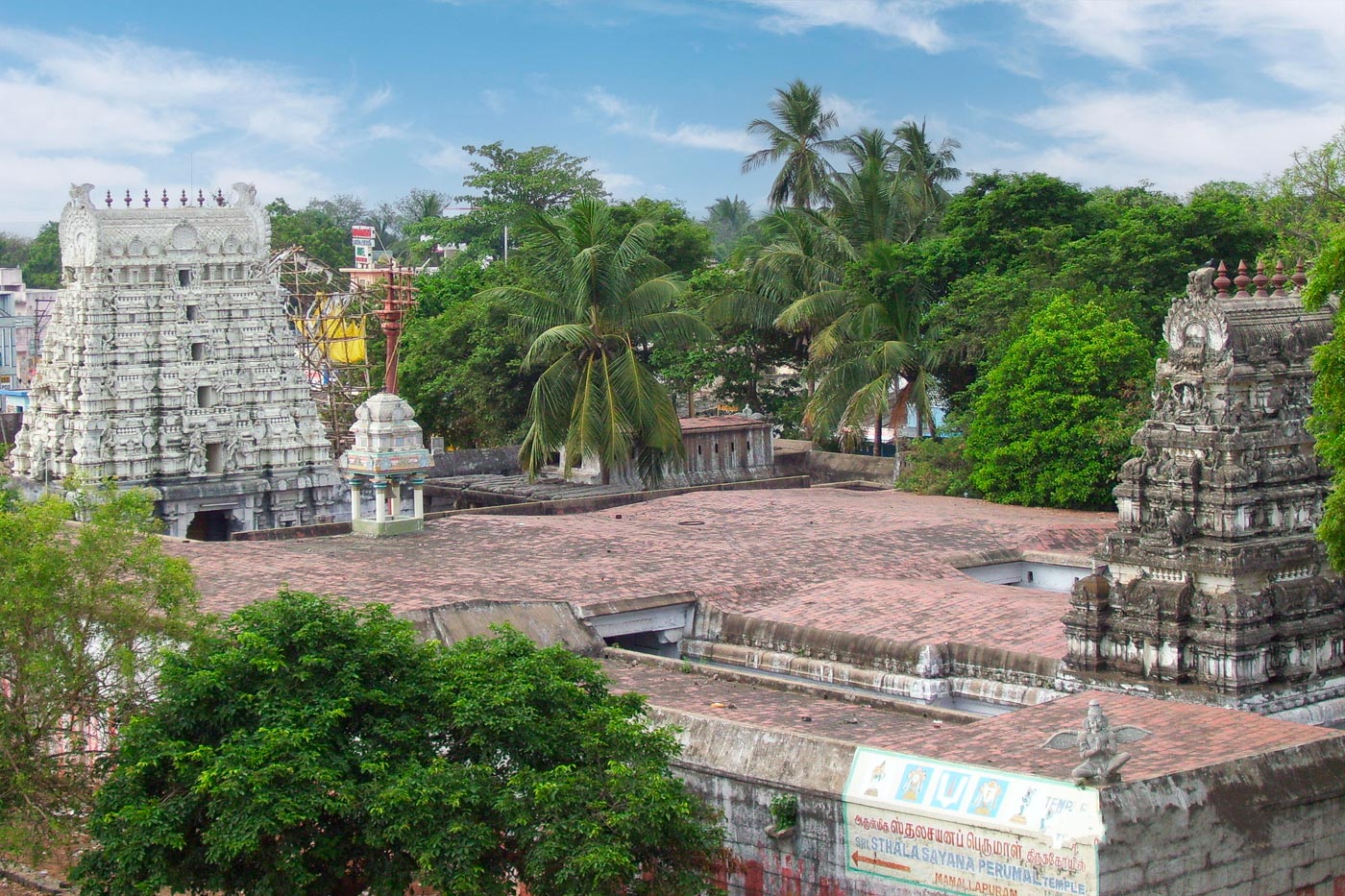
It is an important religious center and festivals are also held there where musical instruments are played and daily rituals such as pooja are performed.
Eleven imposing lion heads carved above the entrance to the rock cave give Tiger Cave its name. This cave, also belonging to the Pavalla period and built in the 8th century, is one of the most interesting in Mamallapuram, and, a few years ago, a new inscription was revealed that led to the discovery of a new find in the area.
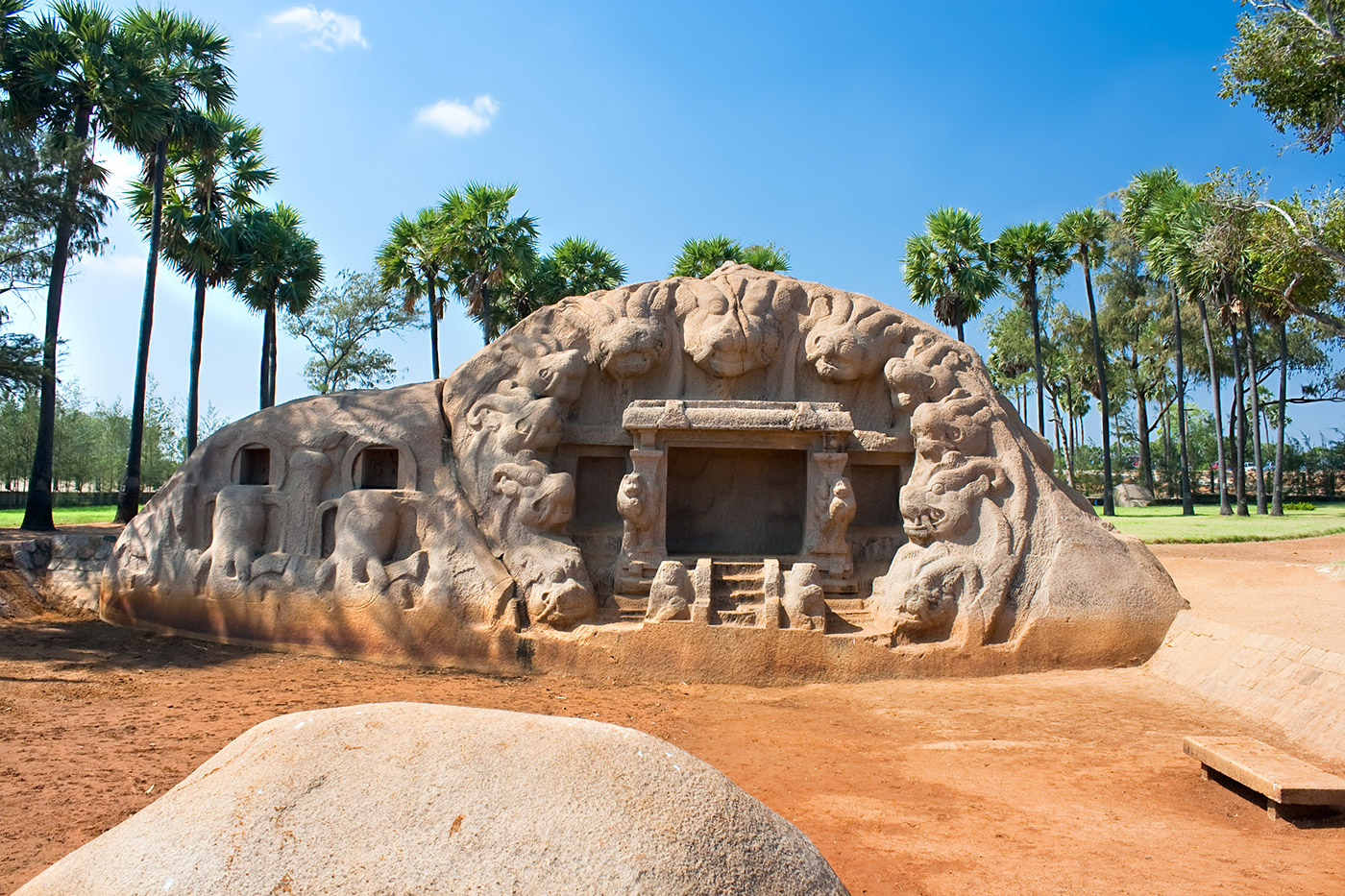
It is located a little apart from the rest of the carved rocks, but it is well worth visiting, and, perhaps, imitating the locals, who come here for picnics.
This small temple carved into a rock shows us the Hindu “trinity” of Brahma, Vishnu and Shiva, with the most important sanctuary being dedicated to the latter. Trimurti Cave is an important example of Pavalla architecture, but it is not clear which ruler built this cave. A few small steps lead us to its interior, where we can observe the carvings in detail.
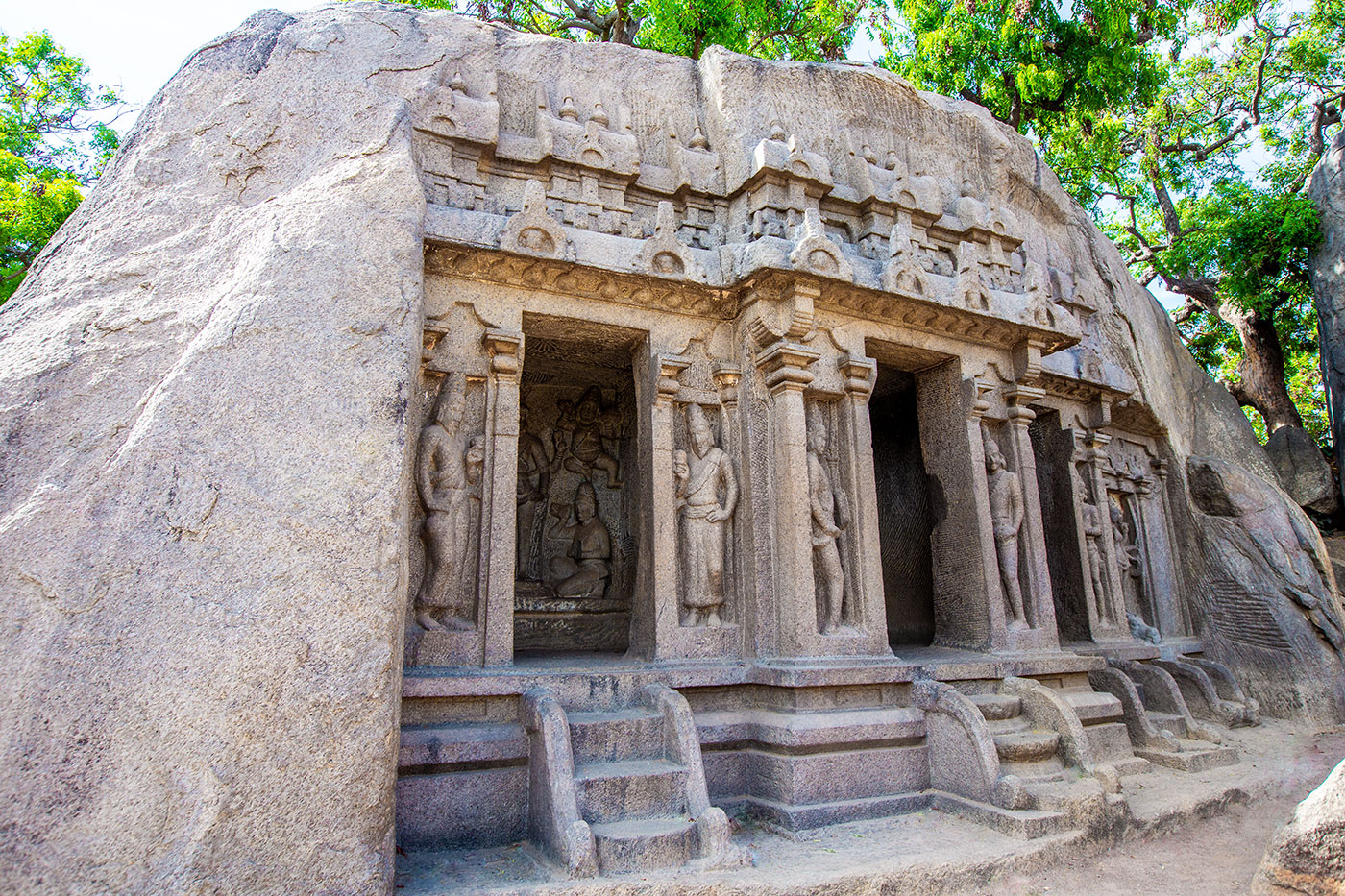
The back has a relief with, once again, beautiful elephants and other animals.
Ganesh or Ganesha Ratha is one of the most striking chariot-shaped temples in the entire monument complex. Carved entirely from stone and following Pavalla architecture, it was built in the 7th century, and was originally dedicated to Shiva.
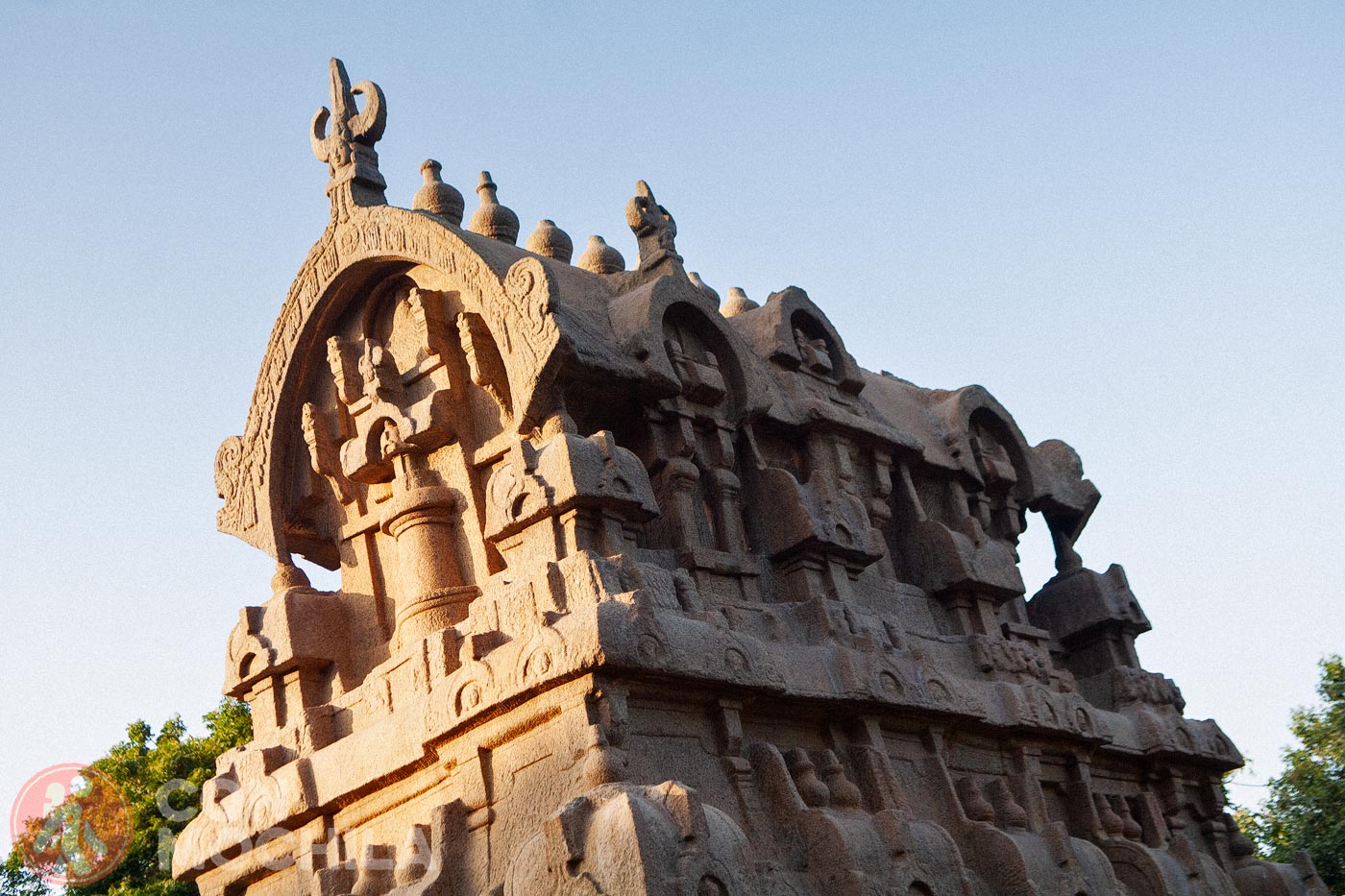
The upper part has a three-storey stepped tower with sculptures of dwarapalakas or guardians, and some other shapes like horseshoe-shaped windows, some of which are not carved in much detail.
About 4 km from Shore Temple, away from the main sites, we find Varaha Cave Temple or Varaha Mandapa, named thus surely for its most striking sculpture, that of Vishnu in the form of Varaha (serpent) lifting the mother earth Bhumi.
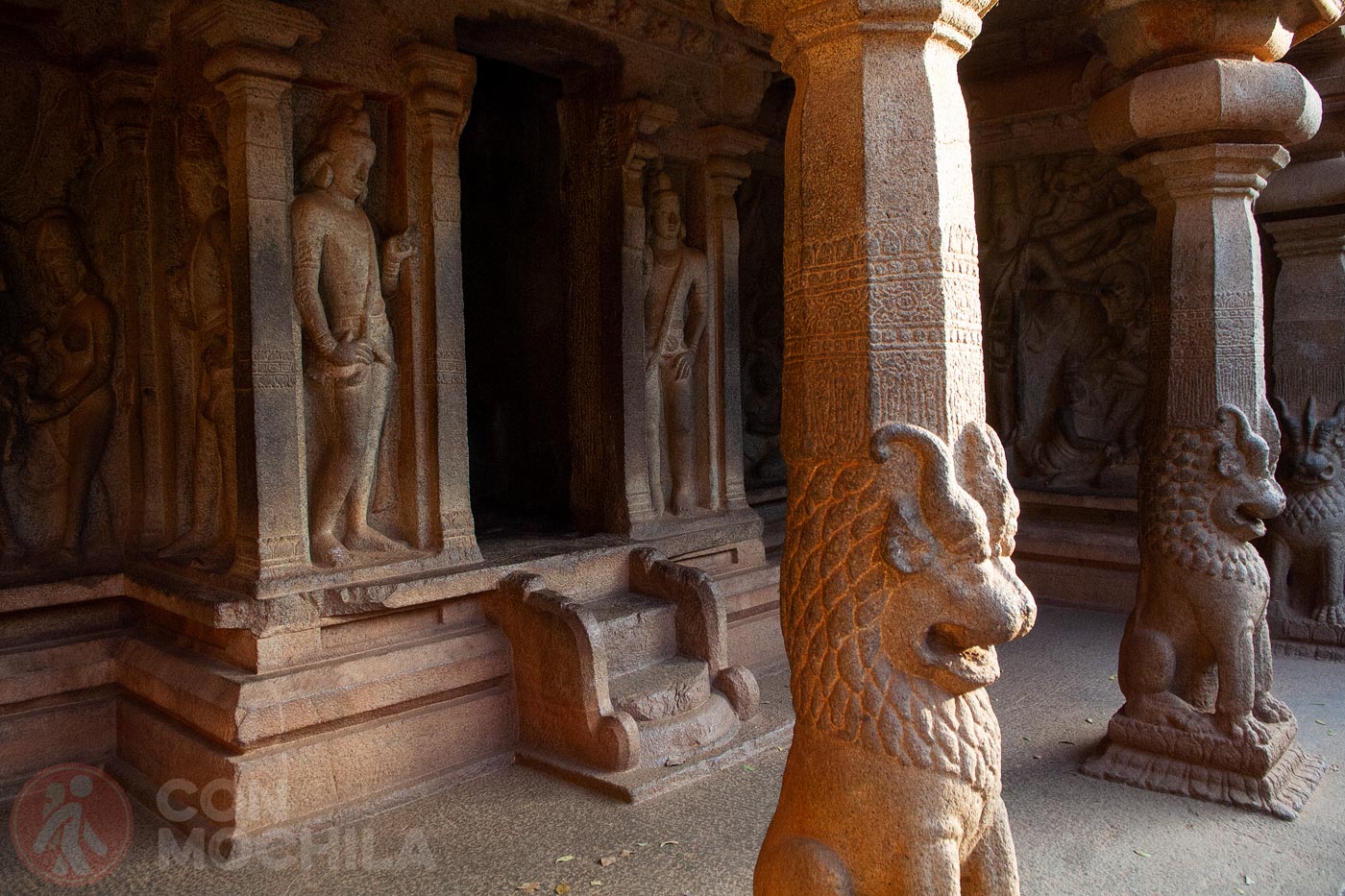
This temple is carved into a rock and has decorated columns supported by lions. It is said to be one of the oldest sculptures in the area.
Proving that this is a fishing village, dozens of colorful boats flood a beach that, despite not being the most desirable place to take a bath, given the state of the sand and the wind, is pleasant for a walk (if you manage to avoid the numerous sellers of necklaces and other jewelry, of course).
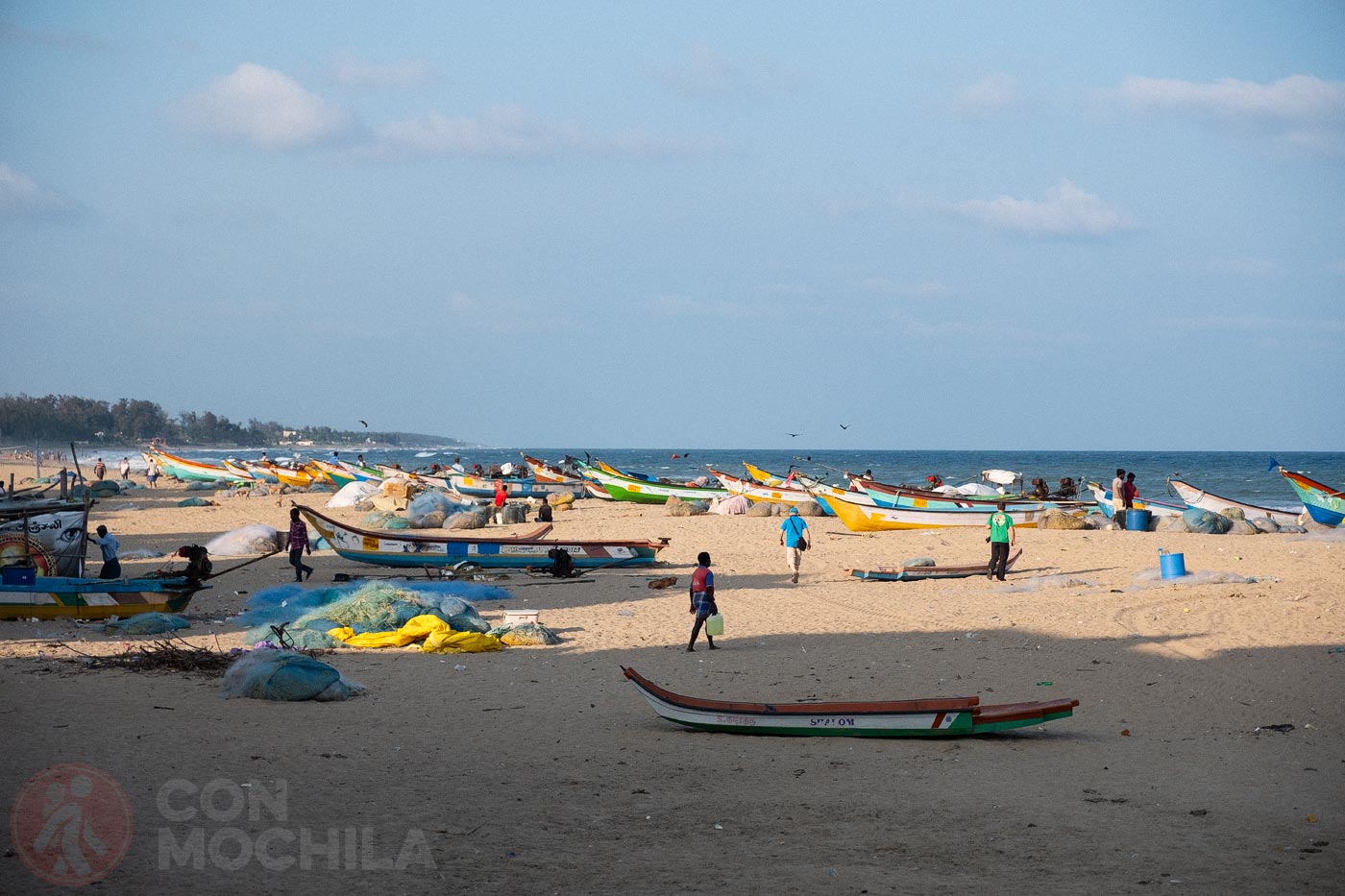
If you have an extra day in Mamallapuram and you fancy seeing something different, you can always head to the India Seashell Museum. It is said to be one of the largest in India and was born from the dream of its founder, after he began collecting special seashells.
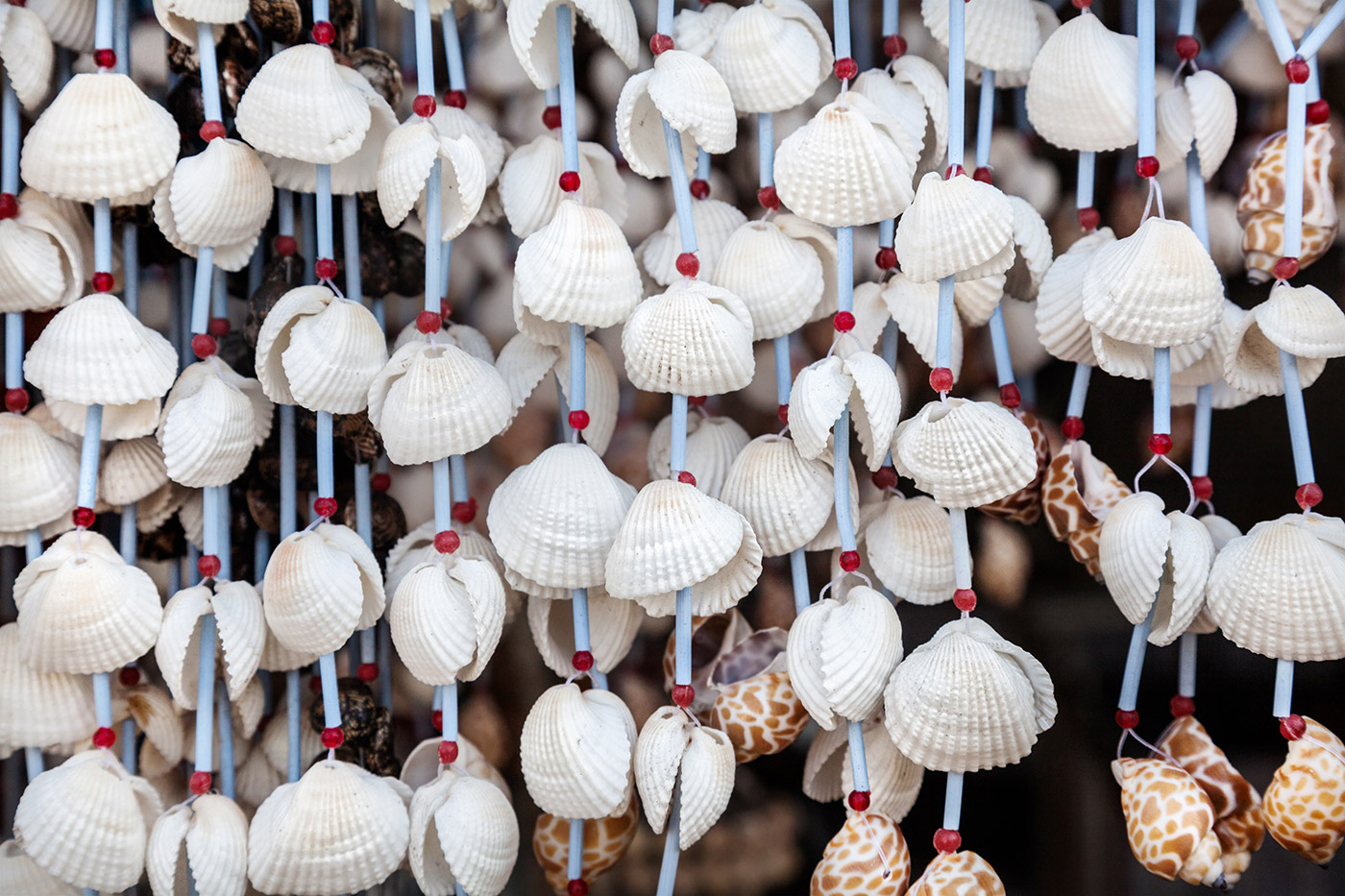
Although one day is more than enough to see the stone sculptures, if you have time it is not a bad idea to stay a couple more days and quietly enjoy everything that Mamallapuram has to offer between chais, masalas and yoga classes.
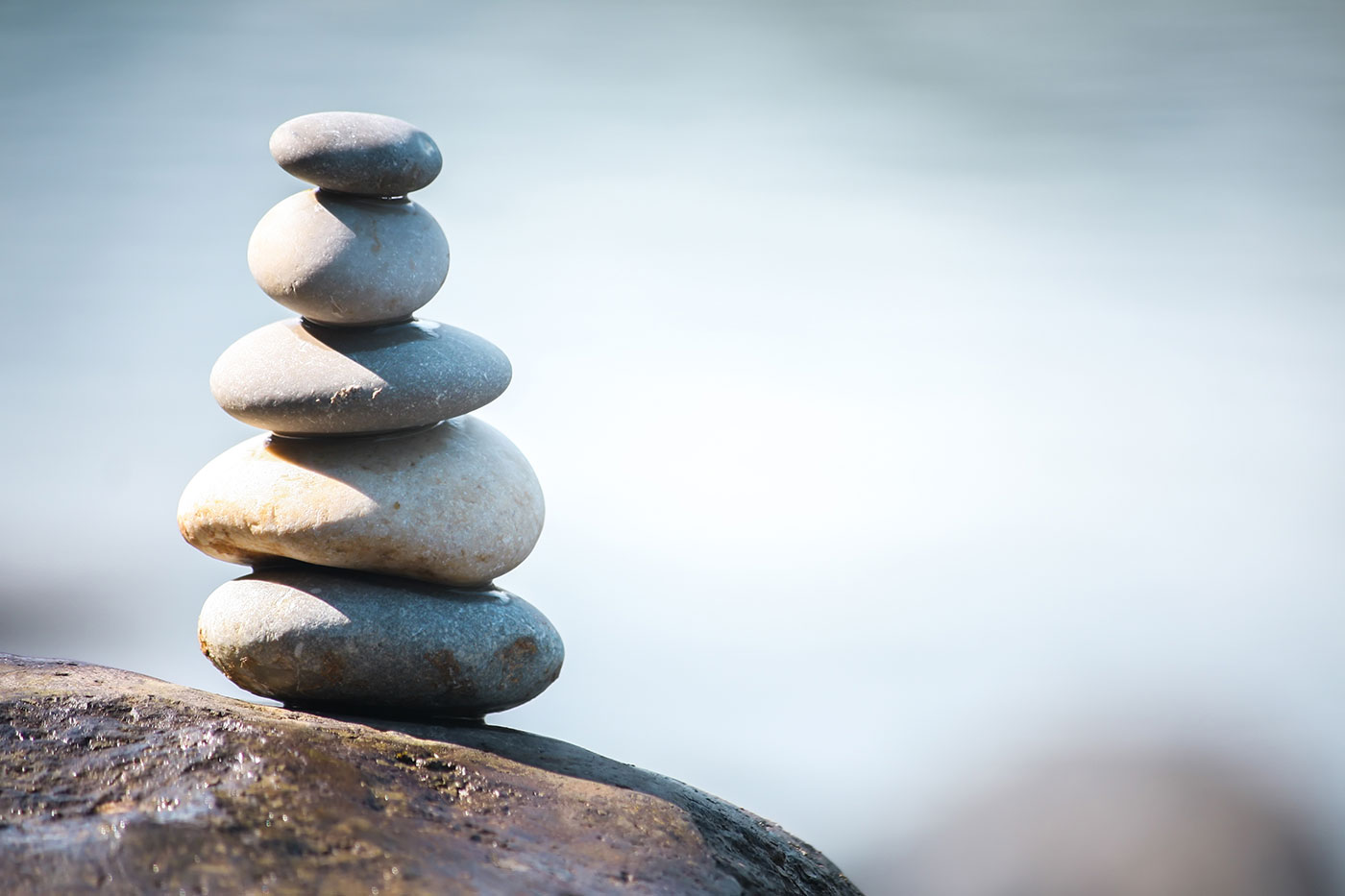
In this coastal town, we find numerous establishments that offer massages. Many hotels or resorts, depending on our budget, have spas. We must look carefully at the signs and decide which one we trust the most.
The best way to see the main monuments of Mamallapuram is by walking around the city. To get to know a bit of its historic area, we recommend this walking tour of the historic area of Mamallapuram, starting with Arjuna’s Penitence, Five Rathas or Shore Temple. Before booking it, check if it includes entrance fees to the attractions.
If you are in Chennai, it is possible to spend the day in Mamallapuram to explore this coastal area that is a World Heritage Site. We recommend several options for doing so, whether you prefer a private vehicle or something more active like a bicycle tour.
The accommodation options in Mamallapuram are huge, with many of them affordable for budget travelers. Our first choice was Vinodhara Guesthouse, a hostel located in the heart of the city, very close to restaurants and souvenir shops.
We also stayed at Rajalakshmi Guesthouse, just opposite to the previous one, and about 200 meters and closer to the road that crosses the village we also stayed at Living Dreams Residency. All of them are humble but clean, so choose the one you like the most.
You can also take a look at the recommendations we detail:
The easiest way to get around Mamallapuram is on foot, as the monuments are located in the town and very close to each other, although you can always rent a bike and travel longer distances. Traffic in the town is quite relaxed, unlike other places in India.
Click on the image and it will take you to a new Google Maps window with all the points of interest to travel around Mamallapuram.